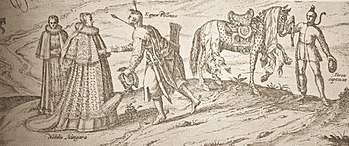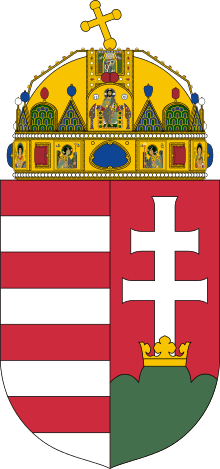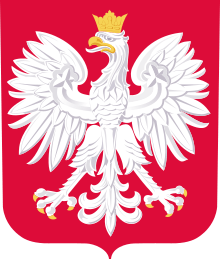Pole and Hungarian brothers be

"Pole and Hungarian brothers be" (the Polish version) and "Pole and Hungarian, two good friends" (the Hungarian version) are English translations of a popular saying about the traditional kinship, brotherhood, and camaraderie between Poles and Hungarians.
Texts
The saying's Polish text reads
Polak, Węgier — dwa bratanki,
i do szabli, i do szklanki,
oba zuchy, oba żwawi,
niech im Pan Bóg błogosławi.
The full, two-couplet Hungarian version reads
Lengyel, magyar – két jó barát,
Együtt harcol s issza borát,
Vitéz s bátor mindkettője,
Áldás szálljon mindkettőre.
The Polish text may be translated
Pole and Hungarian brothers be,
good for fight and good for party.
Both are valiant, both are lively,
Upon them may God's blessings be.
or, more literally,
Pole and Hungarian — two brothers,
good for saber and for glass.
Both courageous, both lively,
May God bless them.
A shorter Hungarian couplet
Lengyel, magyar – két jó barát,
együtt harcol s issza borát.
may be translated
Pole and Hungarian — two good friends,
fighting and drinking at the end.
or, more literally,
Pole, Hungarian — two good friends,
together they battle and drink their wine.
The saying's Polish version has two couplets, each of the four lines containing eight syllables. The shorter Hungarian version has a single couplet, each of the two lines also consisting of eight syllables. The Polish bratanek (in modern parlance, "brother's son", or fraternal nephew) differs in meaning from the Hungarian barát ("friend"), though the words look similar. The Polish version is commonly quoted by Poles. The Hungarian language has 10 versions, most of which are two-line, eight-syllable couplets.
History
Congeniality

In its Polish and Hungarian variants, the saying addresses the long, special relationship between Poland and Hungary. Poles and Hungarians consider themselves brothers in war and peace, and the saying was a 16th (or 18th)-century creation of the Polish middle and minor nobility. They recognized that the countries had the same political structure: a nobles' republic (Polish Rzeczpospolita, Hungarian natio Hungarica), a democratic parliamentary system in which the state and king were controlled by a non-aristocratic noble class. The Polish word rokosz (a gathering to resist royal authority) derives Hungary's Rákos, a field near Pest which was the medieval venue for mass meetings of Hungarian middle and minor nobility.
The Poles recognized that both countries' noble classes employed similar military tactics, weaponry, lifestyles and share common history, making them "brothers". When the Poles elected the Hungarian Stephen Báthory (prince of Transylvania) king of Poland in 1576, he introduced military reforms: creating Poland's hussars and importing from Transylvania Poland's first saber-makers, promoting the superior sword. In Poland, the szabla became known as the szabla węgierska ("Hungarian saber") or batorówka after King Stephen Báthory; it was subsequently called the zygmuntówka after Poland's King Sigismund III Vasa and the augustówka after King Augustus III.
The nobility of both countries enjoyed wine (imported to Poland primarily from Hungary during the Middle Ages), resulting in a similar temperament and lifestyle. In Hungary, the saying became widely known outside noble circles in the late 19th century. According to one source, the proverb's original Polish version was Węgier, Polak dwa bratanki i do szabli i do szklanki. Oba zuchy, oba żwawi, niech im Pan Bóg błogosławi.[1]
The saying probably originated after the 1772 collapse of the Bar Confederation (1768–72), which had been formed to defend the Polish-Lithuanian Commonwealth from aggression by the Russian Empire. According to Julian Krzyżanowski, the saying was inspired by the political asylum in Szepesség, Kingdom of Hungary (present-day Spiš, Slovakia), of the confederation's leaders.[2] According to another source, it "comes from the period when the Generality of the Bar Confederation [the Confederation's supreme authority] took up residence in Eperjes (now Prešov in eastern Slovakia) between 1769 and 1772".[3][4]
Similar interests
The relationship between Poland and Hungary dates to the Middle Ages. After the invasion of the Huns in Scythian-Sarmatian-Slavic territory, some of their nomadic warrior clans adopted the sedentary agricultural culture of the Sarmatians and Slavs and settled in the plains of Pannonia (inhabited by White Croats—Poles, Slovaks, Slovenes, Croats and Moravians and the Sarmatian Iazyges and Serboi). Magyar clan chiefs soon adopted pre-schismatic Christianity, marrying into the Byzantine Komnenos and Polish Piast dynasty.
Bolesław V the Chaste married Kinga, daughter of Béla IV of Hungary and Maria Laskarina. His knights, from the Gryfici (Świebodzice) clan, and their Hungarian compatriots from the Aba, Csák and Záh clans built fortifications against Turko-Mongol and Germanic raids.
In 1243, Klemens z Ruszczy from the Gryfici (Świebodzice) clan returned from fighting the Turko-Mongols in Hungary with his Hungarian companions from the Záh clan. They rebuilt Będzin Castle and founded garrisons at Zyhcych (Żychcice) and Wojkowice to protect the silver mines at Rosperk in the Duchy of Bytom.
Future Polish king Władysław I the Elbow-high, fighting the Teutonic Order, found shelter at the courts of the Aba and Záh (Nógrád Castle) clans in Hungary. Záh knights guarded Władysław's family. Władysław married a Polish-Byzantine-Hungarian princess, Jadwiga of Kalisz. Maria of Bytom and Władysław's daughter, Elżbieta, became queen of Hungary.
In the 15th century, the countries briefly shared a king: Poland's Władysław III of Varna, who died at age twenty fighting the Turks at Varna, Bulgaria. During the 16th century, Poland elected as its king the Hungarian nobleman Stephen Báthory. In the Hungarian Revolution of 1848, the Polish general Józef Bem became a national hero in both countries.
During the Polish–Soviet War (1919–21), Hungary offered to send 30,000 cavalry to Poland's aid; however, the Czechoslovak government refused to allow them passage through the demilitarized zone which had existed between Czechoslovakia and Hungary since the Czechoslovak-Hungarian war several months earlier. The Romanian government took a similar stance, also refusing passage. When the Hungarians tried to send ammunition trains, Czechoslovakia again refused but Romania agreed if the Hungarians used their own trains.
From the Middle Ages into the 18th century, Poland and Hungary shared a border between Poland and Carpathian Ruthenia (also known as Carpathian Rus, ruled by several Hungarian states). After World War I, the Allies transferred Carpathian Ruthenia from Hungary to Czechoslovakia. Poland never ratified the Treaty of Trianon. The treaty with Hungary was not signed until 4 June 1920, did not become effective until 26 July 1921, and was never published in Poland's Journal of Laws. After the 30 September 1938 Munich Agreement (which doomed Czechoslovakia and after the proclamation of the First Slovak Republic lead to the remainder to be taken over by Germany), Poland and Hungary worked with diplomatic and paramilitary means to restore their common border by engineering the return of Carpathian Rus to Hungary.[5] A step toward this goal was realized with the 2 November 1938 First Vienna Award.
Until mid-March 1939, Germany considered a Hungarian-Polish frontier undesirable for military reasons. That month, Hungary took over Carpatho-Rus (which called itself Carpatho-Ukraine). Hitler intended to use Slovakia as a staging ground for his planned invasion of Poland. In March 1939, however, Hitler changed his mind about the common Hungarian-Polish frontier and decided to betray Germany's ally (the Organization of Ukrainian Nationalists, who had begun organizing Ukrainian military units in 1938 in a sich outside Uzhhorod in Carpathian Ukraine); Polish political and military authorities saw this as an imminent danger to nearby southeastern Poland, with its largely-Ukrainian population.[6] On 17 September 1939, pursuant to the Molotov–Ribbentrop Pact and the Gestapo–NKVD conferences, the Soviet Union seized eastern and southeastern Poland and made it part of western Ukraine. Hitler was concerned that if a Ukrainian army organized in Carpathian Rus accompanied German forces invading the Soviet Union, Ukrainian nationalists would insist on an independent Ukraine.[7]
During the Hungarian Revolution of 1956, Poles demonstrated their support for the Hungarians by donating blood; by 12 November, 11,196 Poles had donated. The Polish Red Cross sent 44 tons of medical supplies to Hungary by air, and larger amounts were sent by road and rail.
Friendship Day
On 12 March 2007, Hungary's parliament declared 23 March as Hungarian-Polish Friendship Day. Four days later, the Polish parliament declared 23 March Polish-Hungarian Friendship Day by acclamation.[8]
Friendship Day is celebrated regularly in both countries with concerts, festivals, and exhibitions. Some Polish music groups, such as SBB, feature Hungarian musicians (for example, Tamás Somló and Gábor Németh); Hungarian bands such as Locomotiv GT and Omega feature Polish musicians, including Józef Skrzek.
See also
- Mieszko II Lambert
- Leszek the White
- Maria Laskarina
- Coloman of Galicia
- Béla IV of Hungary
- Bolesław V the Chaste
- Kinga of Poland
- Yolanda of Poland
- Władysław I the Elbow-high
- Jadwiga of Kalisz
- Amadeus Aba
- Amadej coat of arms
- Matthew III Csák
- Záh (gens)
- Maria of Bytom
- Elizabeth of Poland, Queen of Hungary
- Matthias Corvinus
- György Dózsa
- Stephen Báthory
- Władysław III of Varna
- Józef Bem
- Michael Kovats and Casimir Pulaski
- Ignacy Łukasiewicz
- Poznań 1956 protests
- Hungarian Revolution of 1956
- Sylwester Zych
- Hungary–Poland relations
- Union of Hungary and Poland
- First Vienna Award
Notes
- ↑ Michał Czajkowski, Dziwne życie Polaków i Polek (The Strange Life of Polish Men and Women), Leipzig: F. A. Brockhaus, 1865, pp. 155, 193.
- ↑ Julian Krzyżanowski, Odrodzenie i reformacja w Polsce (The Renaissance and Reformation in Poland), vol. 36–38, p. 161.
- ↑ Henryk Markiewicz, Andrzej Romanowski, Skrzydlate słowa (Winged Words), 1990, p. 830.
- ↑ Janusz Tazbir states: "The Commonwealth was partitioned into three parts, subjected to three annexing powers. It was then that the popular proverb came into being, which appears in a number of variants: Polak, Węgier — dwa bratanki..." Janusz Tazbir, Sarmaci i świat (The Sarmatians and the World), vol. 3, 2001, p. 453.
- ↑ Józef Kasparek, "Poland's 1938 Covert Operations in Ruthenia", East European Quarterly", vol. XXIII, no. 3 (September 1989), pp. 366–67, 370. Józef Kasparek, Przepust karpacki: tajna akcja polskiego wywiadu (The Carpathian Bridge: a Covert Polish Intelligence Operation), p. 11.
- ↑ Józef Kasparek, "Poland's 1938 Covert Operations in Ruthenia", p. 366.
- ↑ Józef Kasparek, "Poland's 1938 Covert Operations in Ruthenia", pp. 370–71.
- ↑ Uchwała Sejmu Rzeczypospolitej Polskiej z dnia 16 marca 2007 r. (in Polish)
References
- Józef Kasparek, "Poland's 1938 Covert Operations in Ruthenia", East European Quarterly, vol. XXIII, no. 3 (September 1989), pp. 365–73.
- Józef Kasparek, Przepust karpacki: tajna akcja polskiego wywiadu (The Carpathian Bridge: a Covert Polish Intelligence Operation), Warszawa, Wydawnictwo Czasopism i Książek Technicznych SIGMA NOT, 1992, ISBN 83-85001-96-4.
- Edmund Charaszkiewicz, "Referat o działaniach dywersyjnych na Rusi Karpackiej" ("Report on Covert Operations in Carpathian Rus"), in Zbiór dokumentów ppłk. Edmunda Charaszkiewicza (Collection of Documents by Lt. Col. Edmund Charaszkiewicz), opracowanie, wstęp i przypisy (edited, with introduction and notes by) Andrzej Grzywacz, Marcin Kwiecień, Grzegorz Mazur, Kraków, Księgarnia Akademicka, 2000, ISBN 83-7188-449-4, pp. 106–30.
External links
- Polish-Hungarian dictionary (in Polish)

